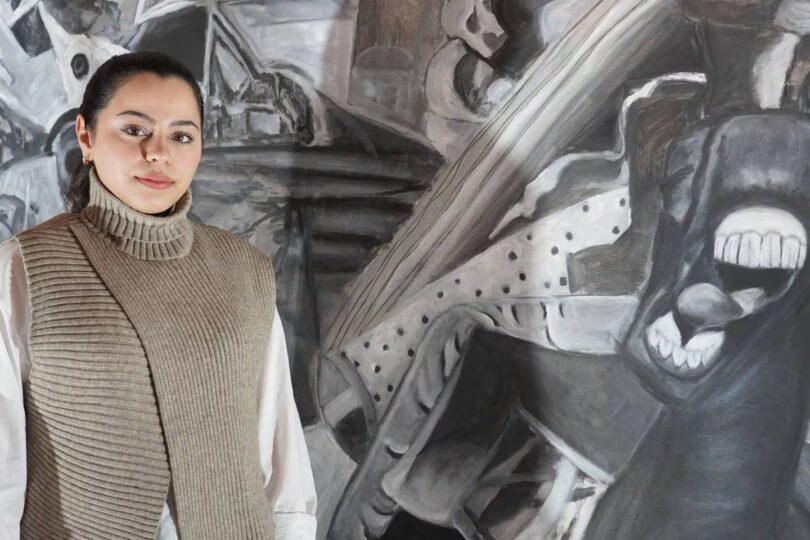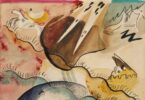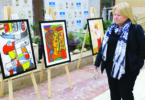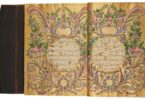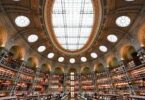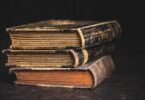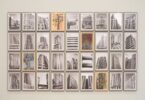Melissa Gronlund
Last spring, before nearly everything she knew was gone, Palestinian artist Malak Mattar was accepted into one of London’s most prestigious art schools.
Despite having never formally studied art, she comes from a family of artists and poets in Gaza. She has painted colour-saturated canvases of Palestine from a young age. She did many during the 2014 war when her neighbourhood was flattened and the homes of her grandparents and uncle were destroyed.
She thought the two years studying a Master of Fine Arts at Central Saint Martins would allow her to understand “my evolution as a person”.
She also wanted to “make something different from political work that talked about political things”.
But by the time she received her exit visa from the Israeli authorities, she had missed a month ofthe course. She didn’t arrive in London until October 6. The day after, everything changed.
“In October, I couldn’t even hold a pencil,” Mattar recalls about the initial days of the conflict in Gaza. “I was completely paralysed. But then I woke up, and now I have an even bigger mission than before.”
Last month, when she began a residency in central London, Mattar started work on a large-scale painting depicting the war in Gaza, rendered in black-and-white and thick brushstrokes. She aims to fully document the terror Gaza is now living through.
:quality(70)/cloudfront-eu-central-1.images.arcpublishing.com/thenational/VDGSUZTZABBIRLURKLOGZBE5G4.JPG)
“It is a responsibility,” she says. “I come here with a sense of purpose that this painting will be remembered and seen for its depiction of the genocide. My only fear is not being able to do it as well as possible. And not being able to make it as horrific as possible, because no matter what, it will only reflect 1 per cent of what has happened. But at least I could do the 1 per cent.”
With her family still in Gaza, she is watching the war from afar, using their stories and images, as well as footage from social media, for her painting. Organised as a series of vignettes, she is turning these stories and photos – many of which have circulated throughout the Arab world – into history-level artwork. Each has its basis in reality, chosen because it appears emblematic of the conflict: a woman shot by a sniper who is pulled to safety by two men who toss her a nearby rope; a line of men with their hands tied behind their backs as they wait to be interrogated
:quality(70)/cloudfront-eu-central-1.images.arcpublishing.com/thenational/PRS2WUIQBFAOJLW2FMFT3UWHVA.JPG)
Animals feature heavily in the painting, reflecting the importance of pets and farm animals for families in Gaza. In the left foreground, a man cradles a dog in his arms. It comes from an Instagram post of a man who had left his pet on the streets because he believed it would be safer than in his house. Later his home was bombed, and he returned to find the dog waiting for him in front of the rubble of his house. He lifted it like a child for the photo.
Screaming in pain
A brawny black horse occupies the painting’s centre, screaming in pain. It pulls a cart piled with furniture, curled mattresses and the hazy outlines of a lifeless body. Horses are now a more trustworthy method of ferrying the wounded to hospitals, explains Mattar. In the absence of fuel and vehicles, people are also using them to transport the contents of their houses as they move from village to village looking for safety.
Despite the horse’s pained expression, Mattar has painted it as an emblem of power – increasing its size three times on the canvas from her first compositional draft, giving it more space and strength each time.
:quality(70)/cloudfront-eu-central-1.images.arcpublishing.com/thenational/HJCYSMFLVJGOVOPXRDESVH2W6M.JPG)
“This is how I think of Gaza,” she says. “Yes, it’s been horrific for the past four months, and yes, they damaged all our archives, every bit of history. But it will always be a place of resilience, power and survival.
“I’m not going to make the horse weak and dusty. This painting, the fact that I made it here, that I lost sleep, and I put all my life into this, it’s coming from a place of power. This injustice should be seen and exposed to the world. Even if they try to turn their eyes away, it will haunt them for ever.”
100 preliminary sketches
Mattar’s studio is funded by An Effort, a non-profit organisation that supports residencies for female artists from the Arab region, and sits in the former vault of London’s National Gallery. Since she won the residency, she has come to the site every day to work on the painting – even during the periodic communications blackouts when she could not reach her parents. Walls are covered with preliminary sketches, more than 100 in total, that she made for the painting.
Lit by a single standing soft-box light, the place has the eerie feel of being neither night nor day. It is an easy place to forget where you are or to get lost in footage shared on social media, with its engulfing access but disempowered distance. It is also easy to imagine that Mattar comes to paint as a means of coping with the destruction, but she has no time for the idea of catharsis.
:quality(70)/cloudfront-eu-central-1.images.arcpublishing.com/thenational/CVMUE4X53RFSDP6T3NF4ZDA5OE.JPG)
“No, painting makes me feel worse,” she says. “Because you get deeply into the pain. And I take everything personally – like the men are my father, the woman is my mother, the babies are my siblings. So it’s worse, digging deep into this. It makes me live it, makes me go through it.”
Artworks of scale have a history of documenting war, especially seen from afar. Perhaps the closest example is Dia Al Azzawi’s Mosul: Panorama of Destruction, the vast drawing the Iraqi artist made in 2017 during the siege. Like Mattar’s untitled work, Azzawi’s Mosul was painted while he was away from the conflict in his home country, and equally like his typically richly coloured work, it unfolds in almost cinematic black-and-white.
For Mattar, equally, the bright reds and yellows of her earlier work have disappeared, and she now works in monochrome. “I look at all these tubes of oil paint,” she says. “The only colour that speaks to me is black.”
Azzawi has supported Mattar. He visited her studio and gave her feedback on a sketch of the dog, suggesting she improve the rendering of its anatomy, which she readily took on. The anecdote is a reminder of her youth as a painter – despite her relative success at the age of 24. She already has several shows in London, but she has also never formally trained beyond the instructions she received from her uncle, Mohammed Musallam.
:quality(70)/cloudfront-eu-central-1.images.arcpublishing.com/thenational/X4YMUNJTX5BODHDUJW5FNFRCN4.JPG)
Despite being in London for the fine art course, she has barely visited the campus at Central Saint Martins since she arrived. She is now in the final two weeks of her residency and is racing to finish the painting, which will be displayed in March at a solo exhibition at Cromwell Place in the UK capital.
She needs to fill in the depiction of the sky and, on the left side, she plans to paint a pile of rubble and bodies, memorialising the gruesome deaths of so many in Gaza. It’s heavy, difficult subject matter, but she refuses to shy away from even the most brutal imagery and does not care whether others do or not.
“If people turn away it means I did a good job,” she says. “If people don’t look at it, it means it’s horrific enough that people cannot face the truth.”
Courtesy: thenationalnews

